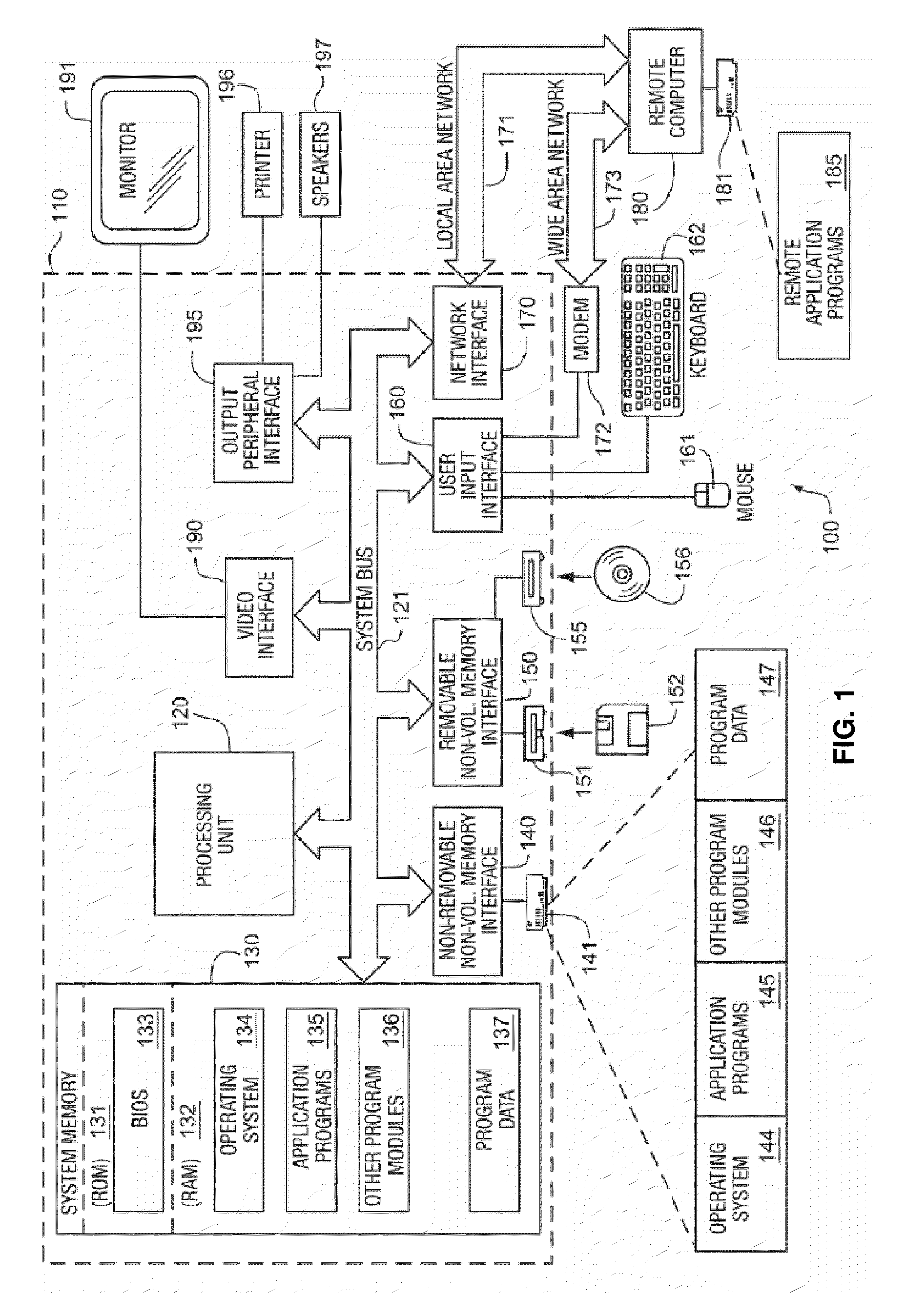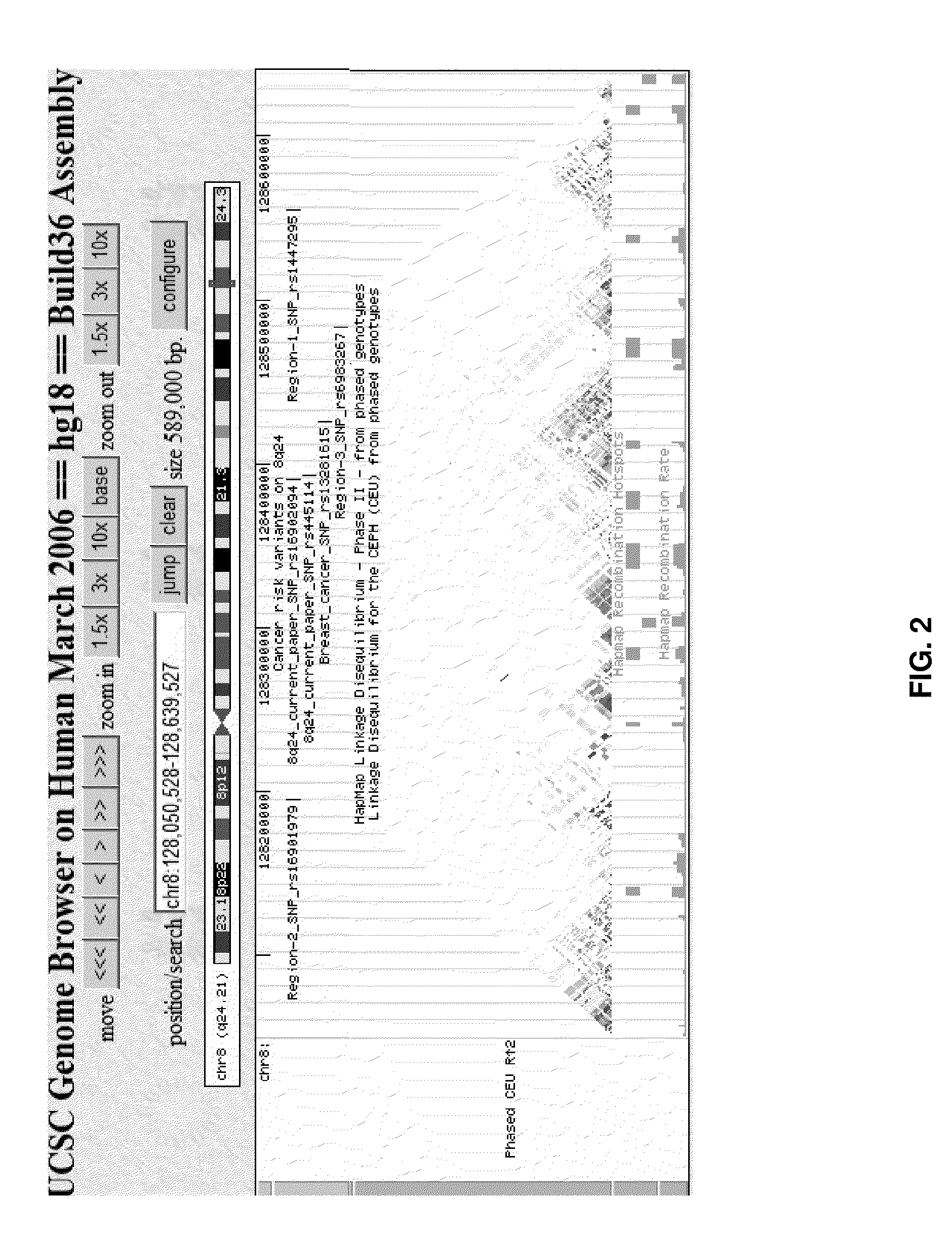Genetic Variants Contributing to Risk of Prostate Cancer
a gene variant and prostate cancer technology, applied in the field of gene variants contributing to prostate cancer risk, can solve the problems of low cure rate, uncontrolled growth, and low cure rate of prostate cancer, and achieve the effects of improving susceptibility to prostate cancer, reducing susceptibility, and improving susceptibility
- Summary
- Abstract
- Description
- Claims
- Application Information
AI Technical Summary
Benefits of technology
Problems solved by technology
Method used
Image
Examples
example 1
[0295]We and others have previously presented results from genome-wide association studies (GWAS) on prostate cancer reporting several common variants conferring risk of the disease (Gudmundsson, J. et al. Nat Genet 39, 631-7 (2007), Haiman, C. A. et al. Nat Genet 39, 638-44 (2007), Gudmundsson, J. et al. Nat Genet 39, 977-83 (2007), Eeles, R. A. et al. Nat Genet 40, 316-21 (2008), Thomas, G. et al. Nat Genet 40, 310-5 (2008), Gudmundsson, J. et al. Nat Genet 40, 281-3 (2008) and Yeager, M. et al. Nat Genet 39, 645-9 (2007)). By scrutinizing our Icelandic GWAS data, analyzing in-house follow-up and public data, as well as through fine-mapping work of previously published loci on 8q24.21, we identified four new variants conferring risk of prostate cancer.
[0296]The four new variants are: allele A of rs10934853 (rs10934853-A) located on 3q21.3, allele G of rs16902094 (rs16902094-G) on 8q24.21, allele T of rs445114 (rs445114-T) also on 8q24.21, and allele C of rs8102476 (rs8102476-C) lo...
example 2
[0320]Marker rs620861, which is an alias for marker rs7008928, is a surrogate of marker rs445114 (r2=1; Table 10). Investigation of the association of this marker to prostate cancer reveals the following result:
TABLE 12Association results for rs620861 [G] on 8q24.StudyCasesControlsFrequencypopulation(N)(N)CasesControlsORP-valueIcelanda1,84935,3270.7100.6701.206.7E−07
[0321]In a similar manner, marker rs16902104 is an excellent surrogate for rs16902094 (OR=1.36; P-value 2.32E-10).
[0322]The association of surrogate markers was further investigated by imputing markers in the HapMap collection into the Icelandic population. This was done using the IMPUTE software (Marchini, J. et al. Nat Genet 39:906-13 (2007)) and the HapMap (NCBI Build 36 (db126b)) CEU data as reference (Frazer, K. A., et al. Nature 449:851-61 (2007)).
[0323]Results of this analysis is shown in the Tables 13-16 below. The association signal for the different surrogate markers is different. This is due to the different d...
example 3
[0324]Further surrogate markers of the anchor markers rs16902094, rs8102476, rs10934853 and rs445114 were identified using results from the 1000 genome project. This project has the goal of finding most genetic variants that have frequencies of at least 1% in the populations studied through sequencing. Details of the project are available on its website http: / / www.1000genomes.org.
[0325]Using data about samples of European origin, SNPs in LD with the anchor markers were identified. These SNPs as tabulated in the Tables 17-20 below represent further surrogates for the anchor markers rs16902094, rs8102476, rs10934853 and rs445114.
TABLE 17Surrogate markers based on 1000 genome project(http: / / www.1000genomes.org) to anchor marker rs10934853 onChromosome 3q21.3, with r2 > 0.2 in Caucasians. Shown is;Surrogate marker name, position of surrogate marker in NCBI Build 36,the allele that is correlated with risk-allele of the anchor marker, andD′, r2, and P-values of the correlation between the...
PUM
| Property | Measurement | Unit |
|---|---|---|
| polymorphic | aaaaa | aaaaa |
| nucleic acid sequence | aaaaa | aaaaa |
| nucleic acid sequence data | aaaaa | aaaaa |
Abstract
Description
Claims
Application Information
 Login to View More
Login to View More - R&D
- Intellectual Property
- Life Sciences
- Materials
- Tech Scout
- Unparalleled Data Quality
- Higher Quality Content
- 60% Fewer Hallucinations
Browse by: Latest US Patents, China's latest patents, Technical Efficacy Thesaurus, Application Domain, Technology Topic, Popular Technical Reports.
© 2025 PatSnap. All rights reserved.Legal|Privacy policy|Modern Slavery Act Transparency Statement|Sitemap|About US| Contact US: help@patsnap.com



